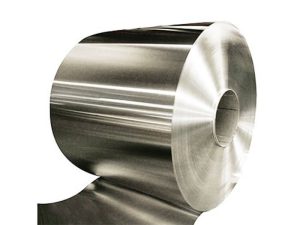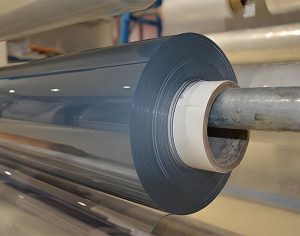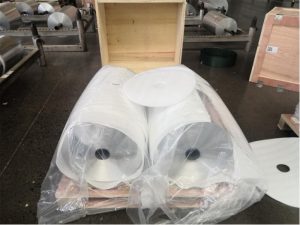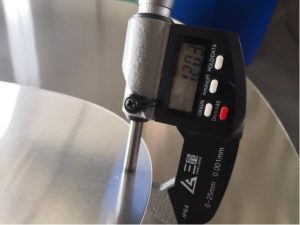1050 Aluminium Strip Features
The 1050 aluminium strip is known for its excellent features that make it suitable for a wide range of applications. Here are some of its key characteristics:
- High Electrical Conductivity: It’s often used in the electrical and chemical industries due to its high electrical conductivity.
- Corrosion Resistance: Offers excellent resistance to corrosion, making it ideal for use in environments where it may be exposed to the elements.
- High Ductility: Its high ductility allows it to be easily formed and used for various applications.
- Highly Reflective Finish: The reflective surface is beneficial for applications such as lamp reflectors.
- Moderate Strength: While it’s not the strongest of aluminium alloys, it provides sufficient strength for general sheet metal work.
- Good Workability: It can be easily cold worked, which is great for manufacturing processes.
- Weldability: It has excellent weldability with certain filler wires, making it versatile for fabrication.
These properties make the 1050 aluminium strip a versatile material used in many industries, including construction, decoration, and radiator manufacturing. It’s also used for food industry containers, architectural flashings, and cable sheathing.
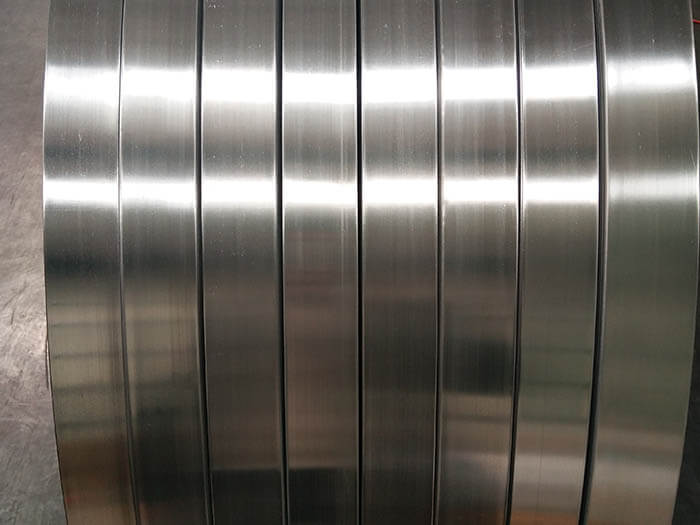
Chemical Composition of 1050 Aluminium
Here’s the chemical composition of 1050 aluminium in a tabular format:
| Element |
Present |
| Aluminium (Al) |
>= 99.50 % |
| Copper (Cu) |
0-0.05% |
| Magnesium (Mg) |
0-0.05% |
| Silicon (Si) |
0-0.25% |
| Iron (Fe) |
0-0.4% |
| Manganese (Mn) |
0-0.05% |
| Zinc (Zn) |
0-0.05% |
| Titanium (Ti) |
0-0.03% |
| Vanadium, V |
<= 0.05 % |
| Other, each |
<= 0.03 % |
This composition makes 1050 aluminium highly ductile, corrosion-resistant, and conductive.
Performance of 1050 Aluminum Strips
Mechanical Properties of 1050 Aluminium Strip
the mechanical properties for 1050 aluminum in different tempers (Specific data comes from the authoritative website Matweb):
| Property |
1050-O |
1050-H14 |
1050-H16 |
1050-H18 |
| Hardness, Brinell |
21 |
30 |
35 |
43 |
| Tensile Strength, Ultimate (MPa) |
76.0 |
110 |
131 |
160 |
| Tensile Strength, Yield (MPa) |
28.0 |
103 |
124 |
145 |
| Elongation at Break (%) |
39 |
10 |
8.0 |
7.0 |
| Tensile Modulus (GPa) |
69.0 |
69.0 |
69.0 |
69.0 |
| Shear Modulus (GPa) |
26.0 |
26.0 |
26.0 |
26.0 |
| Shear Strength (MPa) |
51.0 |
69.0 |
76.0 |
83.0 |
Please note that the values are typical and provided by the Aluminum Association, Inc. They are not intended for design purposes. The hardness values are given in Brinell hardness, which is measured with a 500 kg load and a 10 mm ball. Tensile strength and shear strength are given in MPa (Megapascals), and elongation at break is given as a percentage. The tensile modulus and shear modulus are given in GPa (Gigapascals).
1050 Aluminium Strips Electrical Conductivity
here is a table summarizing the electrical conductivity of 1050 aluminum strips in different tempers. The electrical resistivity is given in ohm-cm, and the International Annealed Copper Standard (IACS) values are calculated for each temper.
| Temper |
Electrical Resistivity (ohm-cm) |
IACS Value (approx.) |
| 1050-O |
0.00000281 |
61.05 |
| 1050-H14 |
0.00000290 |
59.32 |
| 1050-H16 |
0.00000290 |
59.32 |
| 1050-H18 |
0.00000290 |
59.32 |
Please note that the IACS values are approximate and are calculated using the formula:
IACS=(1Resistivity of the material)×100IACS=(Resistivity of the material1)×100
The resistivity of annealed copper is taken as the reference with a value of 0.00000673 ohm-cm at 20°C, which is assigned an IACS value of 100. The calculated IACS values for the 1050 aluminum tempers are based on their respective resistivities provided in the datasheets.
The IACS values for the 1050 aluminum tempers indicate that they have lower electrical conductivity compared to copper, which is consistent with aluminum’s position in the conductivity series. The slight variations in resistivity and the corresponding IACS values between the different tempers reflect the changes in the material’s microstructure due to the various heat treatments and cold working processes.
1050 Aluminium Strips Thermal Conductivity
The thermal conductivity of 1050 aluminum strips in different tempers, as provided in the datasheets from the links you’ve shared, is summarized in the table below. The thermal conductivity values are given in W/m-K (Watts per meter-Kelvin), which is a measure of a material’s ability to conduct heat.
| Temper |
Thermal Conductivity (W/m-K) |
| 1050-O |
231 |
| 1050-H14 |
227 |
| 1050-H16 |
227 |
| 1050-H18 |
227 |
The thermal conductivity values for 1050-O and 1050-H14 through 1050-H18 are quite similar, with a slight variation between 227 and 231 W/m-K. This indicates that the different tempers of 1050 aluminum have a relatively consistent ability to conduct heat, which is an important property for applications where thermal management is a consideration.
It’s important to note that the thermal conductivity can be influenced by several factors, including temperature, material processing, and the presence of impurities or other alloying elements. The values provided here are typical and may vary depending on the specific manufacturing process and the conditions under which the material is used.
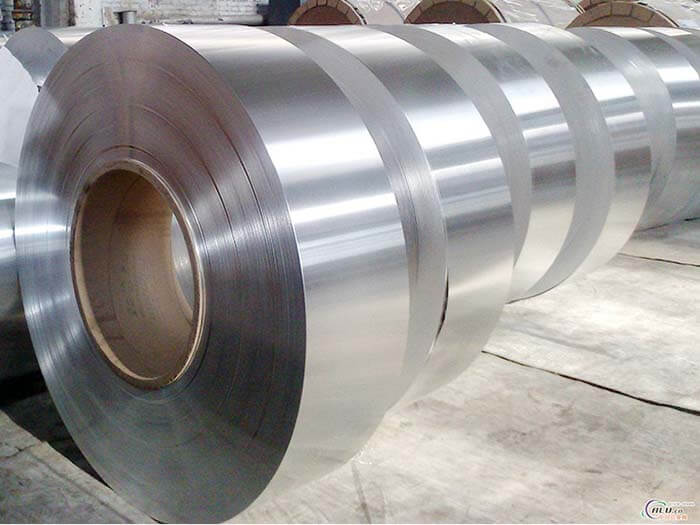
Tolerances for 1050 Aluminium strips
Here is a table with the tolerances for 1050 aluminum strips, including the corresponding inch conversions:
| Tolerance Type |
Tolerance Range (mm) |
Tolerance Range (inches) |
| Thickness Tolerance |
+/-0.005mm to +/-0.15mm |
+/-0.0002 in to +/-0.0059 in |
| Width Tolerance |
+/-0.1mm to +/-2mm |
+/-0.004 in to +/-0.079 in |
| Length Tolerance |
+/-0.5mm to +/-10mm |
+/-0.02 in to +/-0.394 in |
| Flatness Tolerance |
Varies with material dimensions |
Varies with material dimensions |
Please note that the inch conversions are based on the approximate conversion factor of 1 inch = 25.4 mm. The flatness tolerance is not provided with specific values because it varies with the dimensions of the material and is typically measured using a bow gauge, which measures the deviation from a flat surface over a specified length. This tolerance must be discussed and specified with the supplier to meet the particular requirements of the application.
1050 Aluminum Strip Applications and Specifications
General Uses of 1050 Aluminum Strip
The 1050 aluminum strip is a versatile material used across various industries due to its properties. Here are some common applications:
- Daily Necessities
- Lighting Fixtures
- Reflective Panels
- Decorations
- Chemical Industry Containers
- Heat Sinks
- Signs
- Electronics
- Lamps
- Nameplates
- Electrical Appliances
- Stamping Parts
This aluminum strip is particularly beneficial in applications requiring high corrosion resistance and formability without the need for high strength, such as in chemical equipment.
1050 Aluminum Strip for Transformer Winding
The 1050 aluminum strip is favored for transformer windings because of its:
- High Electrical and Thermal Conductivity (approximately 62% IACS)
- Light Weight
- Corrosion Resistance
These properties make it suitable for weight-sensitive transformer applications and ensure a longer service life due to its resistance to corrosion.
Specifications for Transformer Winding
- Alloy: 1050
- Thickness: As required, typically in the range of transformer applications
- Width: As required, to fit the winding specifications
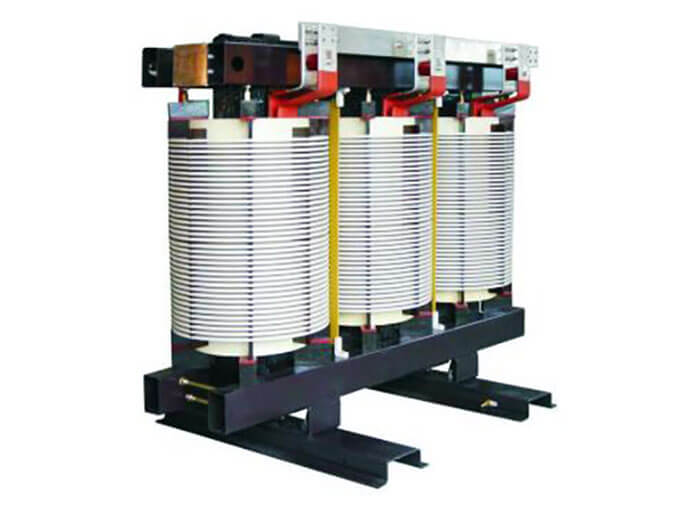
1050 Aluminum Strip for Electrode Foil In the production of electrolytic capacitors, 1050 aluminum strip serves as electrode foil due to its necessary high surface finish and purity. It is crucial for capacitor performance that the material is free from impurities such as oil stains and oxide skins.
| Specification |
Value |
| Alloy |
1050A-O |
| Thickness |
0.08mm |
| Width |
60mm |
1050 Aluminum Strip for Condenser For condenser applications, the 1050 aluminum alloy is chosen for its:
- High Electrical Conductivity
- Excellent Formability
- Corrosion Resistance
- Low Density and Lightweight
This makes it ideal for household appliances and refrigeration systems.
| Specification |
Value |
| Alloy |
1050-H24 |
| Thickness |
0.15mm |
| Width |
500mm |
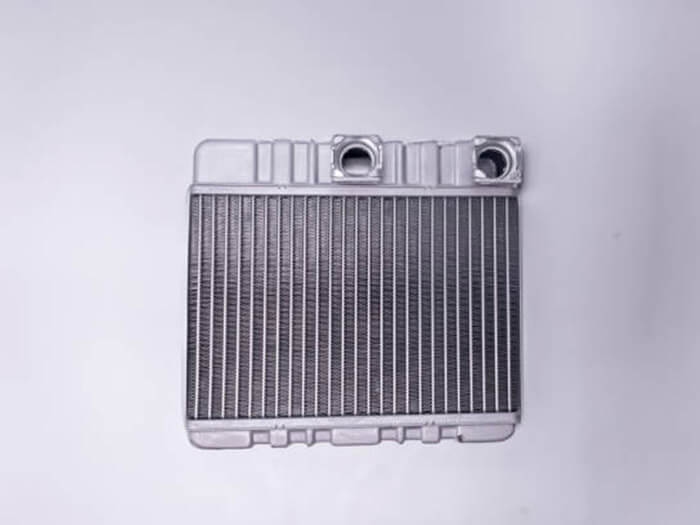
1050 Aluminum Composite Panel (ACP) The 1050 ACP is a sandwich panel used in building decoration, offering aesthetics and durability. It is made by bonding two aluminum panels with a core material, which can be polyethylene, polyurethane, or a refractory mineral core.
| Specification |
Value |
| Alloy |
1050A-H14 |
| Thickness |
0.3-0.5mm |
| Width |
800mm |
The 1050 ACP is popular in the construction industry for its versatility in colors, finishes, and sizes, allowing for custom designs for various projects. It is used in building cladding, signage, and interior decoration.
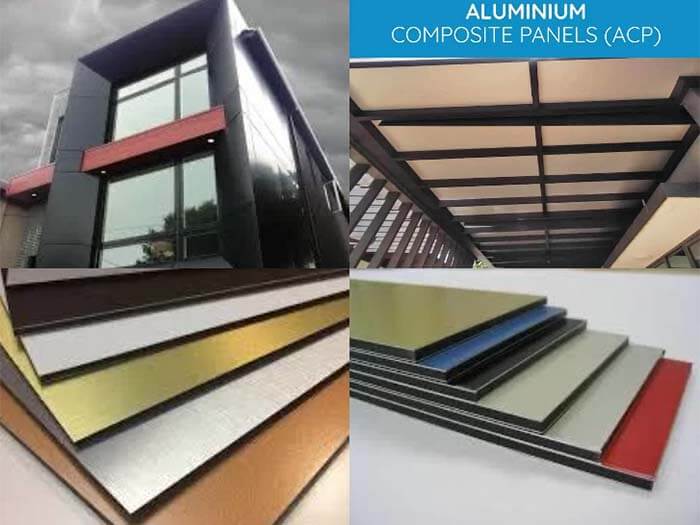
Factors to consider when choosing 1050 Aluminum Strip for your application
When selecting a 1050 Aluminum Strip for your application, here are some key factors to consider:
- Chemical Composition: Ensure the alloy’s composition meets your project’s requirements.
- Corrosion Resistance: Evaluate the environment in which the aluminum strip will be used to ensure adequate resistance.
- Formability: Consider the ease with which the material can be shaped and formed for your specific application.
- Weldability: If your project requires welding, check that the 1050 alloy is suitable for the welding techniques you plan to use.
- Strength and Durability: Assess the mechanical properties to ensure it can withstand the stresses of your application.
- Cost: Factor in the price of the alloy and how it fits into your budget.
Additionally, the temper of the aluminum strip, such as H14 for half hard, can affect its properties and suitability for certain applications, like chemical process plant equipment or food industry containers.
For a comprehensive understanding of how 1050 Aluminum Strip can meet your needs, it’s best to consult with a materials specialist or the supplier. They can provide detailed information on the alloy’s properties and its potential uses in various industries.
